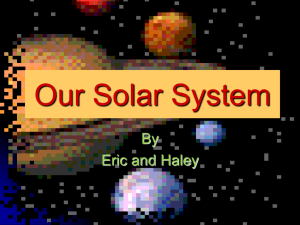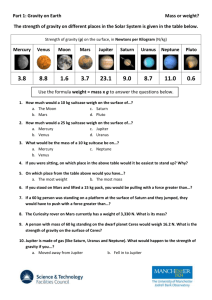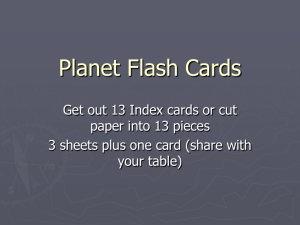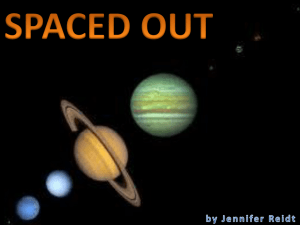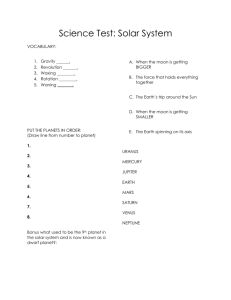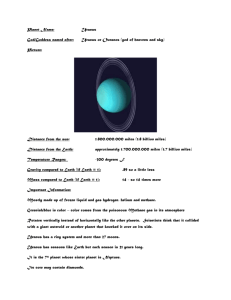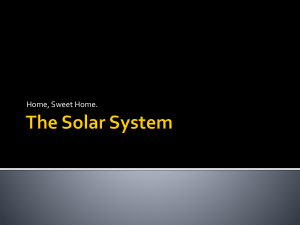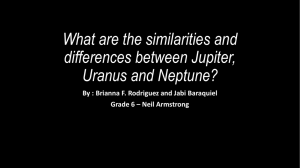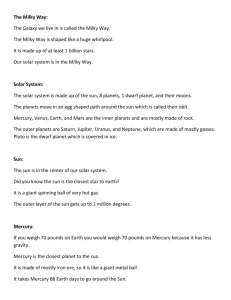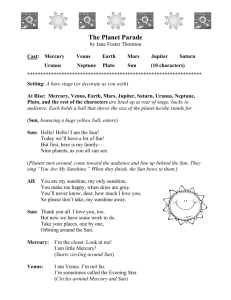Mercury was named after the god of Speed. Mercury is 36 million
advertisement
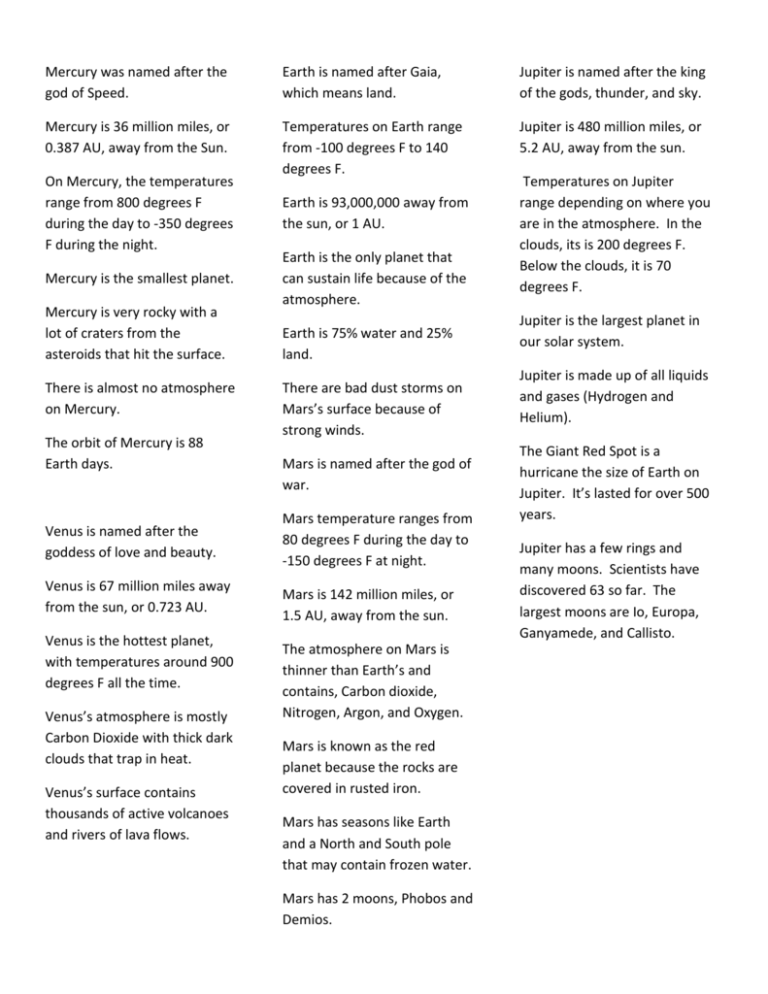
Mercury was named after the god of Speed. Earth is named after Gaia, which means land. Jupiter is named after the king of the gods, thunder, and sky. Mercury is 36 million miles, or 0.387 AU, away from the Sun. Temperatures on Earth range from -100 degrees F to 140 degrees F. Jupiter is 480 million miles, or 5.2 AU, away from the sun. On Mercury, the temperatures range from 800 degrees F during the day to -350 degrees F during the night. Mercury is the smallest planet. Mercury is very rocky with a lot of craters from the asteroids that hit the surface. There is almost no atmosphere on Mercury. The orbit of Mercury is 88 Earth days. Venus is named after the goddess of love and beauty. Venus is 67 million miles away from the sun, or 0.723 AU. Venus is the hottest planet, with temperatures around 900 degrees F all the time. Venus’s atmosphere is mostly Carbon Dioxide with thick dark clouds that trap in heat. Venus’s surface contains thousands of active volcanoes and rivers of lava flows. Earth is 93,000,000 away from the sun, or 1 AU. Earth is the only planet that can sustain life because of the atmosphere. Earth is 75% water and 25% land. There are bad dust storms on Mars’s surface because of strong winds. Mars is named after the god of war. Mars temperature ranges from 80 degrees F during the day to -150 degrees F at night. Mars is 142 million miles, or 1.5 AU, away from the sun. The atmosphere on Mars is thinner than Earth’s and contains, Carbon dioxide, Nitrogen, Argon, and Oxygen. Mars is known as the red planet because the rocks are covered in rusted iron. Mars has seasons like Earth and a North and South pole that may contain frozen water. Mars has 2 moons, Phobos and Demios. Temperatures on Jupiter range depending on where you are in the atmosphere. In the clouds, its is 200 degrees F. Below the clouds, it is 70 degrees F. Jupiter is the largest planet in our solar system. Jupiter is made up of all liquids and gases (Hydrogen and Helium). The Giant Red Spot is a hurricane the size of Earth on Jupiter. It’s lasted for over 500 years. Jupiter has a few rings and many moons. Scientists have discovered 63 so far. The largest moons are Io, Europa, Ganyamede, and Callisto. Saturn is named after the god of harvest. Uranus is named after the god of heavens and sky. Neptune is named after the god of the sea. Saturn is 888 million miles or 9.5 AU away from the sun. Uranus is 1.8 billion miles away from the sun, or 19.2 AU. Saturn’s temperature is about 200 degrees F. Uranus is approximately -300 degrees F. Neptune is located 2.8 billion miles, or 30.09 AU away from the sun. Saturn is a gas giant primarily composed of Hydrogen and Helium. Uranus is mostly made up of frozen liquid and gas hydrogen, helium, and methane. 21 moons have been discovered around Saturn so far. Titan is the largest moon, and also has its own atmosphere. Saturn has thick rings made of ice chunks and rock. Although Saturn is huge, it is not very dense. It is less dense than water. Uranus’s greenish blue color comes from methane gas. Uranus rotates vertically instead of horizontally. Uranus has rings and more than 27 moons. Uranus’s core may contain diamonds. Neptune’s temperature averages -350 degrees F. Neptune is the coldest and windiest planet. There are violent ice and lightning storms. The Great Dark Spot on Neptune is a giant hurricane the size of Earth. Neptune is the sister planet to Uranus. Neptune has 13 known moons.
